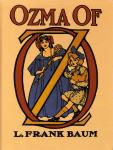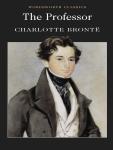Ten Years Later

The Vicomte of Bragelonne: Ten Years Later (French: Le Vicomte de Bragelonne ou Dix ans plus tard) is a novel by Alexandre Dumas. It is the third and last of the d'Artagnan Romances, following The Three Musketeers and Twenty Years After. It appeared first in serial form between 1847 and 1850. In the English translations the 268 chapters of this large volume are usually subdivided into three, but sometimes four or even five individual books. In three-volume English editions the volumes are entitled "The Vicomte de Bragelonne", "Louise de la Vallière", and "The Man in the Iron Mask." Each volume is roughly the length of the original The Three Musketeers. In four-volume editions volume names remain except that "Louise de la Vallière" and "The Man in the Iron Mask" move from second and third volumes to third and fourth, with "Ten Years Later" becoming the second volume. There are usually no volume-specific names in five-volume editions. French academic Jean-Yves Tadié has argued that the beginning of King Louis XIV's personal rule is the novel's real subject.
Contents
- Chapter 1 - The Letter
- Chapter 2 - The Messenger
- Chapter 3 - The Interview
- Chapter 4 - Father And Son
- Chapter 5 - In Which Something Will Be Said Of Cropoli -- Of Cropoli And Of A Great Unknown Painter
- Chapter 6 - The Unknown
- Chapter 7 - Parry
- Chapter 8 - What His Majesty King Louis Xiv. Was At The Age Of Twenty-Two
- Chapter 9 - In Which The Unknown Of The Hostelry Of Les Medici Loses His Incognito
- Chapter 10 - The Arithmetic Of M. De Mazarin
Related Books
Author other works
-
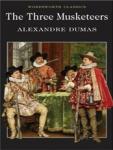
The Three Musketeers
Alexandre Dumas
The Three Musketeers (French: Les Trois Mousquetaires) is a novel by Alexandre Dumas, first serialized in March–July 1844. Set in the 17th century, it recounts the adventures of a young man named d'Artagnan after he leaves home to travel to Paris, to join the Musketeers of the Guard. D'Artagnan is not one of the musketeers of the title; those are his friends Athos, Porthos, and Aramis, inseparable friends who live by the motto "all for one, one for all" ("un pour tous, tous pour un"), a motto which is first put forth by d'Artagnan.The story of d'Artagnan is continued in Twenty Years After and The Vicomte of Bragelonne: Ten Years Later. Those three novels by Dumas are together known as the d'Artagnan Romances.In 1625 d'Artagnan, a poor young nobleman leaves his family in Gascony and travels to Paris with the intention of joining the Musketeer of the Guard.However, en route, at an inn in Meung-sur-Loire, an older man derides d'Artagnan's horse and, feeling insulted, d'Artagnan demands to fight a duel with him. The older man's companions beat d'Artagnan unconscious with a pot and a metal tong that breaks his sword; his letter of introduction to Monsieur de Tréville, the commander of the Musketeers, is stolen. D'Artagnan resolves to avenge himself upon the man, who is later revealed to be the Comte de Rochefort, an agent of Cardinal Richelieu, who is in Meung to pass orders from the Cardinal to Milady de Winter, another of his agents.In Paris, d'Artagnan visits de Tréville at the headquarters of the Musketeers, but the meeting is overshadowed by the loss of his letter, and de Tréville refuses his application to join. From de Tréville's window, d'Artagnan sees Rochefort passing in the street below and rushes out of the building to confront him, but in doing so he separately causes offense to three of the Musketeers, Athos, Porthos, and Aramis, who each demand satisfaction; D'Artagnan must duel each of them in turn that afternoon.When d'Artagnan prepares himself for the first of the three duels, he realizes that his counterparts are friends. But just as he and Athos begin to fight, Cardinal Richelieu's guards appear; they try to arrest the d'Artagnan and the three musketeers for illegal dueling. Although outnumbered, the four men win the battle that follows. In the course of events, d'Artagnan duels and seriously wounds Jussac, one of the Cardinal's officers and a renowned fighter. After learning of this event, King Louis XIII appoints d'Artagnan to des Essarts' company of guards and gives him forty pistoles (currency).D'Artagnan hires a servant, Planchet, finds lodgings, and, by decree of the King, joins Monsieur des Essart's company of Guards, a less prestigious regiment in which he must serve for two years before being considered for the Musketeers. Shortly after his landlord comes to see him to talk about his wife's kidnapping (she is released presently), he falls in love at first sight with his landlord's pretty young wife, Constance Bonacieux. She works for the Queen Consort of France, Anne of Austria, who is secretly conducting an affair with the Duke of Buckingham. The Queen has just received a gift from her husband Louis XIII, and trying to console her lover, she gives him the diamonds as a keepsake. Cardinal Richelieu, who tries to start a war between France and England, wants to reveal that. Quickly he organizes an event and talks the king into demanding that his wife wear the diamonds at this opportunity.Constance doesn't succeed in sending her cowardly husband, who has been manipulated by Richelieu, to London, but d'Artagnan and his friends decide to help. On their mission they are frequently attacked by the cardinal's henchmen and therefore only d'Artagnan and Planchet arrive in London (although Planchet does not accompany d'Artagnan to see Buckingham). In the process of getting to England, d'Artagnan is compelled to assault and nearly kill the Comte de Wardes, a friend of the Cardinal's, cousin to de Rochefort, and Milady's lover. Although two of the diamonds have been stolen by Milady, the Duke of Buckingham is able to provide replacements while delaying the thief's return to Paris. D'Artagnan is thus able to return a complete set of jewels to Queen Anne just in time to save her façade of honor and receives from her a beautiful ring as an expression of her gratitude.Shortly afterwards, d'Artagnan attends a tryst with Madame Bonacieux, but she does not open her door. He notices signs of a struggle, and, asking about, discovers that de Rochefort and Monsieur Bonacieux, acting under the orders of the Cardinal, have assaulted and imprisoned her.D'Artagnan looks after his friends, who have just recovered from their injuries. He brings them back to Paris and meets Milady de Winter officially. He recognizes her from Meung as one of the Cardinal's agents, but this does not deter him. D'Artagnan quickly develops a crush on the beautiful lady but learns from her handmaiden that she is in fact quite indifferent toward him. Later, though, after attending a tryst with her while pretending to be the Comte de Wardes (the lights are out), he also discovers a fleur-de-lis branded on Milady's shoulder, marking her as a felon. D'Artagnan eludes her attempt on his life and is ordered to the siege of La Rochelle.Milady fails continuously in killing d'Artagnan, and he is informed that the Queen has managed to save Constance from the prison. In an inn, the musketeers overhear the Cardinal asking Milady to murder the Duke of Buckingham (who supports the Protestant rebels at La Rochelle). He even gives her a categorical pardon in written form, but Athos takes it from her. The next morning, Athos, in search of a quiet place to talk, makes a bet that he, d'Artagnan, Porthos, and Aramis, and their servants, Grimaud, Planchet, Mosqueton, and Bazin, can hold the St. Gervais bastion (captured by des Essarts' company shortly beforehand) for an hour. They get away after an hour and a half, killing 22 Rochellese in total, and finding a way to warn Lord de Winter and the Duke of Buckingham. Milady is imprisoned on arrival in England but soon seduces her guard, Felton (a fictionalization of the real John Felton), and persuades him both to allow her escape and to kill Buckingham, which he does.On her return to France Milady hides in a convent, where she discovers Constance Bonacieux is also staying. The naive Constance clings to Milady, who sees a chance to get back at d'Artagnan who has crossed her plans with his friends more than once, and fatally poisons Constance before d'Artagnan can retrieve her.The Musketeers manage to find Milady before she can be rewarded and sheltered by Cardinal Richelieu. They come with an official executioner, put her to trial and sentence her to death. After her execution the four friends return to the siege of La Rochelle. They encounter the dodgy gentleman that has bothered d'Artagnan all the way. The Count of Rochefort arrests d'Artagnan and takes him straight to the Cardinal. When asked about Milady's fate, d'Artagnan can save himself by delivering the Cardinal's endorsement, which had been written for Milady and certifies that the deeds of the carrier are by all means approved by the Cardinal. This does not in and of itself protect him, as it only makes the Cardinal laugh. However, impressed with d'Artagnan's cheek and boldness, and secretly glad to be rid of the treacherous Milady, the Cardinal tears the letter of endorsement up and writes a new order, giving the bearer a promotion to lieutenant in de Treville's company of guards. The Cardinal states that anyone can take the order, but to keep in mind it was intended for d'Artagnan. He takes it to Athos, Porthos, and Aramis in turn, but each refuses it, proclaiming d'Artagnan the more worthy man.The siege of La Rochelle ends in 1628, which also marks the end of the book. Aramis retires to a monastery, Porthos marries his wealthy mistress, and Athos serves in the Musketeers under D'Artagnan until 1631, when he retires to his mansion in the countryside.The now four Musketeers meet again in Twenty Years After.
-
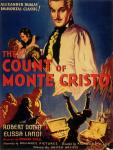
The Count of Monte Cristo
Alexandre Dumas
This book is an adventure novel by French author Alexandre Dumas (père). It is one of the author's most popular works, along with The Three Musketeers. He completed the work in 1844.Dumas wrote that the idea of revenge in The Count of Monte Cristo came from a story in a book compiled by Jacques Peuchet, a French police archivist, published in 1838 after the death of the author. Dumas included this essay in one of the editions from 1846. Peuchet told of a shoemaker, Pierre Picaud, living in Nîmes in 1807, who was engaged to marry a rich woman when three jealous friends falsely accused him of being a spy for England. Picaud was placed under a form of house arrest, in the Fenestrelle Fort where he served as a servant to a rich Italian cleric. When the man died, he left his fortune to Picaud whom he had begun to treat as a son. Picaud then spent years plotting his revenge on the three men who were responsible for his misfortune. He stabbed the first with a dagger on which were printed the words, "Number One", and then he poisoned the second. The third man's son he lured into crime and his daughter into prostitution, finally stabbing the man himself. This third man, named Loupian, had married Picaud's fiancée while Picaud was under arrest.In another of the "True Stories" Peuchet describes a poisoning in a family. This story, also quoted in the Pleiade edition, has obviously served as model for the chapter of the murders inside the Villefort family. The introduction to the Pleiade edition mentions other sources from real life: the Abbé Faria existed and died in 1819 after a life with much resemblance to that of the Faria in the novel. As for Dantès, his fate is quite different from his model in Peuchet's book, since the latter is murdered by the "Caderousse" of the plot. But Dantès has "alter egos" in two other Dumas works; in "Pauline" from 1838, and more significantly in "Georges" from 1843, where a young man with black ancestry is preparing a revenge against white people who had humiliated him.
-
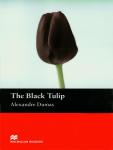
The Black Tulip
Alexandre Dumas
The story begins with a historical event — the 1672 lynching of the Dutch Grand Pensionary (roughly equivalent to a modern Prime Minister) Johan de Witt and his brother Cornelis, by a wild mob of their own countrymen — considered by many as one of the most painful episodes in Dutch history, described by Dumas with a dramatic intensity.The main plot line, involving fictional characters, takes place in the following eighteen months; only gradually does the reader understand its connection with the killing of the de Witt brothers.The city of Haarlem, Netherlands, has set a prize of 100,000 guilders to the person who can grow a black tulip, sparking competition between the country's best gardeners to win the money, honour and fame. The young and bourgeois Cornelius van Baerle has almost succeeded but is suddenly thrown into the Loevestein prison. There he meets the prison guard's beautiful daughter Rosa, who will be his comfort and help, and eventually become his rescuer.
-

Twenty Years After
Alexandre Dumas
Twenty Years After (French: Vingt ans après) is a novel by Alexandre Dumas, père, first serialized from January to August, 1845. A book of the D'Artagnan Romances, it is a sequel to The Three Musketeers and precedes The Vicomte de Bragelonne (which includes the sub-plot, Man in the Iron Mask).The novel follows events in France during La Fronde, during the childhood reign of Louis XIV, and in England near the end of the English Civil War, leading up to the victory of Oliver Cromwell and the execution of King Charles I. Through the words of the main characters, particularly Athos, Dumas comes out on the side of the monarchy in general, or at least the text often praises the idea of benevolent royalty. His musketeers are valiant and just in their efforts to protect young Louis XIV and the doomed Charles I from their attackers. This book is the least well-known of the Musketeer saga but works effectively as a sequel, with reappearances by most main characters (or children of main characters) and a number of subplots.
